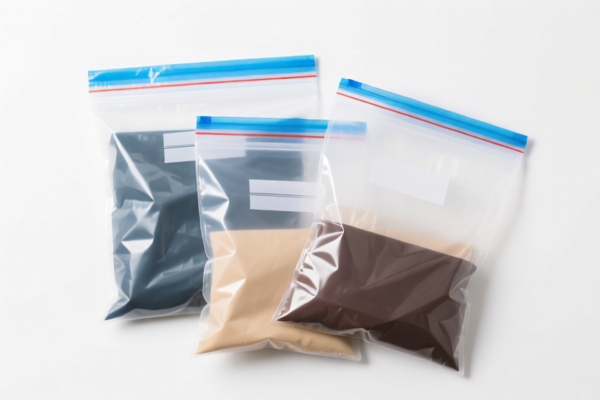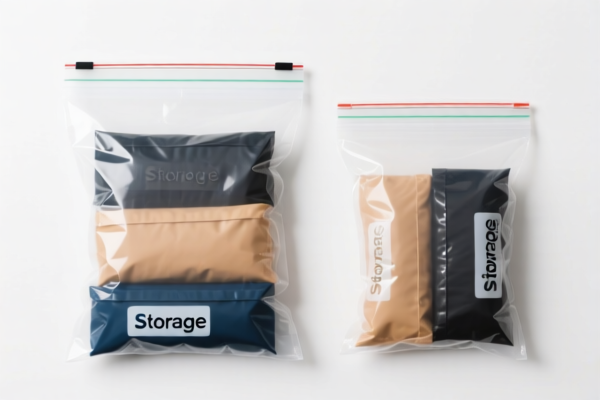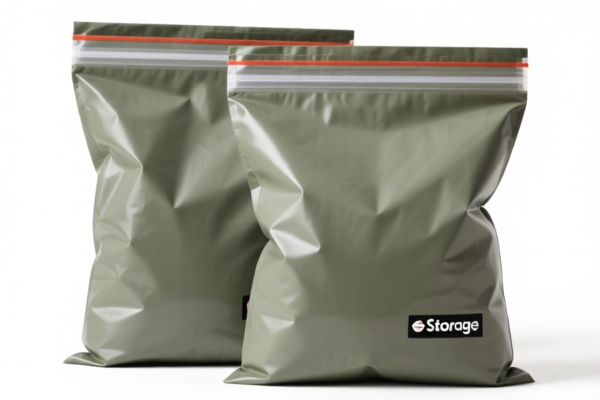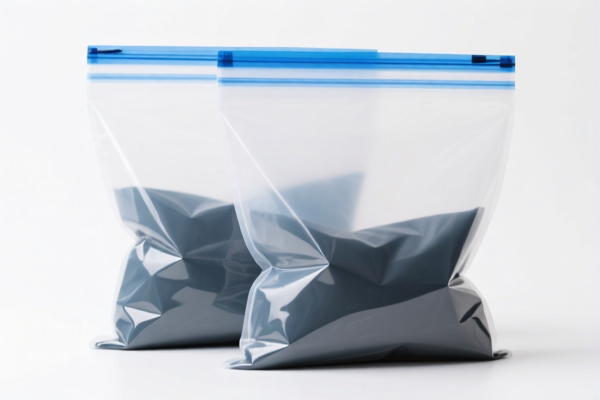| HS Code | Official Doc | Tariff Rate | Origin | Destination | Effective Date |
|---|---|---|---|---|---|
| 3923210080 | Doc | 58.0% | CN | US | 2025-05-12 |
| 3923210095 | Doc | 58.0% | CN | US | 2025-05-12 |
| 3919905060 | Doc | 60.8% | CN | US | 2025-05-12 |
| 3919905040 | Doc | 60.8% | CN | US | 2025-05-12 |
| 4202924500 | Doc | 75.0% | CN | US | 2025-05-12 |
| 4202991000 | Doc | 58.4% | CN | US | 2025-05-12 |




Plastic Storage Bags
Plastic storage bags are flexible containers, typically made from thin plastic film, used for containing, protecting, and organizing various items. They are widely used in both domestic and commercial settings.
Material
The primary material is plastic, with several common types employed:
- Polyethylene (PE): The most common type, offering good flexibility and low cost. Low-Density Polyethylene (LDPE) is frequently used for general purpose bags, while High-Density Polyethylene (HDPE) provides greater strength and is often used for grocery bags and heavier items.
- Polypropylene (PP): Offers higher melting point and better chemical resistance than polyethylene, making it suitable for food storage and freezer bags.
- Polyvinyl Chloride (PVC): Less common due to environmental concerns, but sometimes used for specialized applications requiring high clarity and durability.
- Biodegradable/Compostable Plastics: Increasingly available, made from plant-based materials like cornstarch, offering an environmentally friendly alternative. These require specific composting conditions to break down effectively.
Purpose
- Containment: Holding and transporting items.
- Protection: Shielding contents from moisture, dust, and contamination.
- Organization: Separating and categorizing items for easy access and identification.
- Preservation: Extending the shelf life of food by reducing exposure to air and moisture (especially freezer bags).
Function
The function of a plastic storage bag relies on its material properties:
- Barrier Properties: Preventing the passage of gases and liquids.
- Tensile Strength: Resisting tearing and punctures.
- Flexibility: Allowing the bag to conform to the shape of the contents.
- Sealability: Maintaining a closed environment, achieved through various methods (zippers, twist ties, heat sealing).
Usage Scenarios
- Household: Storing food (fresh produce, leftovers, frozen items), organizing clothing, containing toiletries, packing items for travel.
- Commercial: Packaging goods for retail, storing components in manufacturing, waste disposal, food service (take-out containers).
- Industrial: Protecting sensitive materials during transport and storage, containing hazardous waste.
Common Types
- Ziplock Bags: Feature a reusable zipper closure for convenient sealing and opening. Available in various sizes and thicknesses.
- Trash Bags: Designed for waste disposal, typically made from LDPE and available in different capacities and thicknesses.
- Grocery Bags: Used for carrying purchased items from stores. Increasingly replaced by reusable alternatives.
- Freezer Bags: Made from thicker, more durable plastic (often polypropylene) to withstand low temperatures and prevent freezer burn.
- Food Storage Bags: Designed for preserving food freshness, often with features like venting or write-on labels.
- Vacuum Storage Bags: Designed to remove air from bags to compress items, commonly used for storing clothing and bedding.
- Compostable Bags: Biodegradable alternatives for specific composting systems.
Plastic storage bags fall under articles for the conveyance or packing of goods, made of plastics. The specific HS code depends on the polymer composition and size.
Here are the relevant HS codes based on the provided information:
-
3923210080: This HS code covers articles for the conveyance or packing of goods, of plastics; stoppers, lids, caps and other closures, of plastics: Sacks and bags (including cones): Of polymers of ethylene. This specifically applies to sacks and bags made of polyethylene, where no single side exceeds 75 mm in length.
- 39: Chapter 39 – Plastics and articles thereof.
- 23: Heading 23 – Plastics packaging articles, including containers; stoppers, lids, caps and other closures.
- 21: Subheading 21 – Sacks and bags (including cones).
- 00: Further specifies bags made of polymers of ethylene.
- 80: Indicates other bags with no single side exceeding 75 mm in length.
-
3923210095: This HS code also covers articles for the conveyance or packing of goods, of plastics; stoppers, lids, caps and other closures, of plastics: Sacks and bags (including cones): Of polymers of ethylene. However, this applies to “Other” polyethylene sacks and bags, meaning those not meeting the size restriction of no single side exceeding 75 mm.
- 39: Chapter 39 – Plastics and articles thereof.
- 23: Heading 23 – Plastics packaging articles, including containers; stoppers, lids, caps and other closures.
- 21: Subheading 21 – Sacks and bags (including cones).
- 00: Further specifies bags made of polymers of ethylene.
- 95: Indicates other bags not specifically defined.
According to the provided reference material, the HS code options related to 'plastic storage bags' are limited, with only the following 2 found.
It is important to determine the polymer composition (specifically if it is polyethylene) and the dimensions of the bags to select the correct HS code.
Customer Reviews
No reviews yet.